ARA is going to have 37 stations laid out like this:
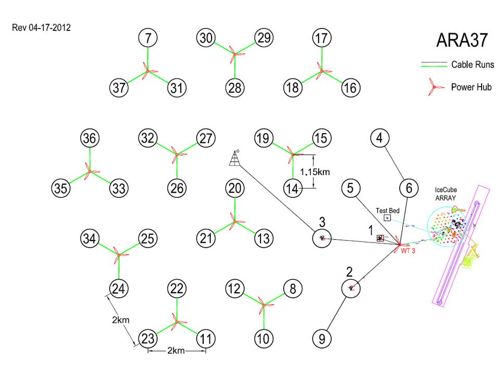
(The diagram shows wind turbines between every 3 stations. Originally, that's how the more remote stations would be powered but, now, it's more likely that there will be power cables running to each station instead.)
To get one station up and running, this is what has to happen:
- The site has to be surveyed and prepared. This means that the site is located and snow-plowed, flags are placed where each hole should be drilled (there are 6 holes at each station), and a road to the station is made.
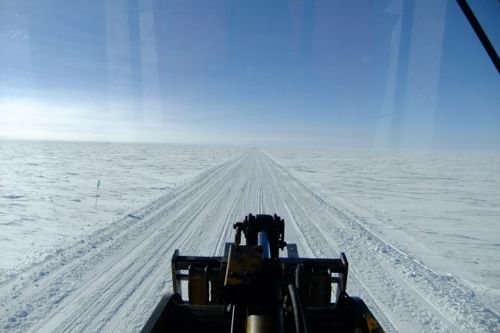
- The drill camp has to be moved and set up. It depends on the circumstances, but both times we moved while I was there, it took about half a work day (which, for the ARA crew could still be 6 or 7 hours).
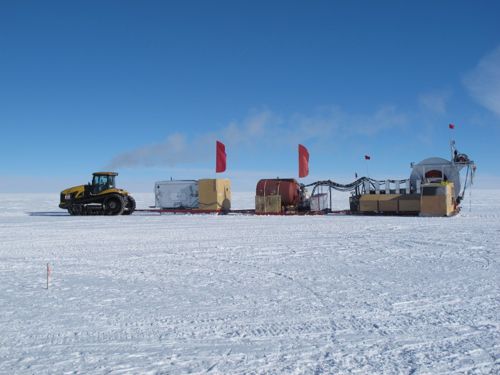
The holes have to be drilled. (Which is described in a lot of detail in this post: http://www.polartrec.com/expeditions/icecube-in-ice-antarctic-telescope-2012/journals/2012-12-13)
The antennas (and a couple other things) are placed into each hole. Ideally, the drillers will make a hole on the first day. On the second day, while they're drilling another hole, the deployment team puts the antennas into the first hole.
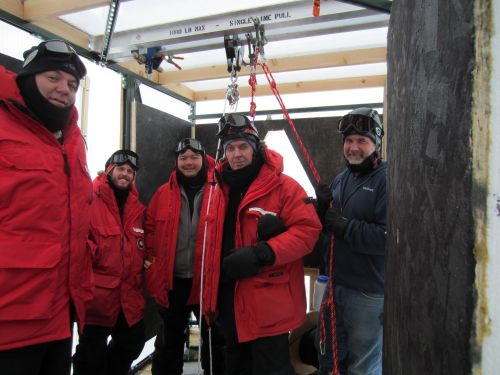
There's a lot that goes on during deployment so that's the focus of this post.
The equipment all had to be tested and brought out to the site. It's put in the deployment shed (aka "The Crystal Palace") so it's within easy reach when the string is being assembled/deployed.
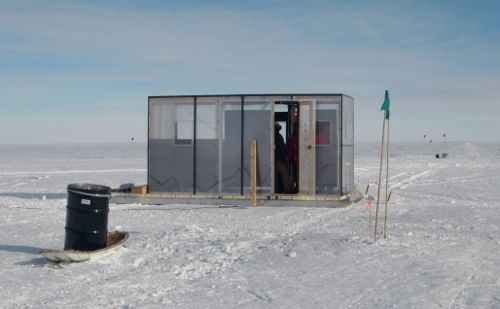
All of the equipment that goes into the hole is attached to a thick nylon rope. The rope is run through a pulley and around a capstan winch. One of the deployers holds on to the end of the rope. The other end goes down the hole.
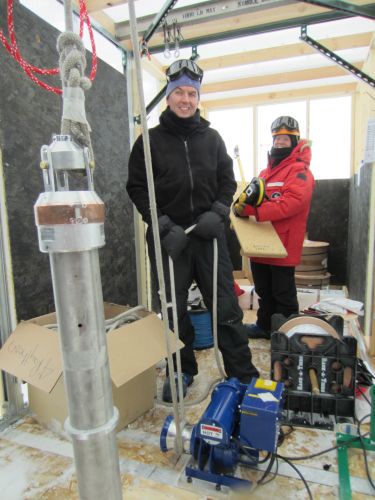
The rope needs to hang straight so the first thing that goes on the rope is a 2x4. The end of the rope is tied around the wood and then it's lowered into the hole. (This is all done from inside the Crystal Palace - it's like an ice fishing hut. There's an opening in the floor so that the hole can be accessed without the deployers having to stand outside the whole time).
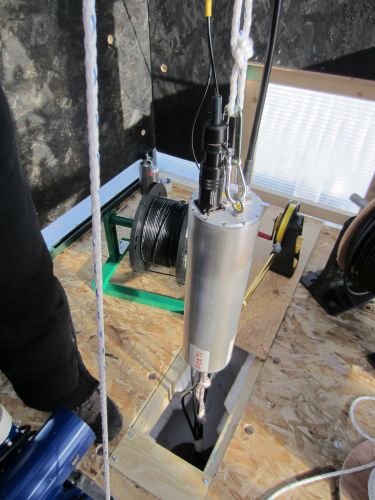
After the wood, the rope is lowered into the hole some and then the first antenna is attached. The first one is always a v-pol antenna. V-pols (short for "vertically polarized") are for detecting electromagnetic waves that are perpendicular to the earth's surface (or vertical). There are actually two v-pols so this first one is the bottom v-pol.
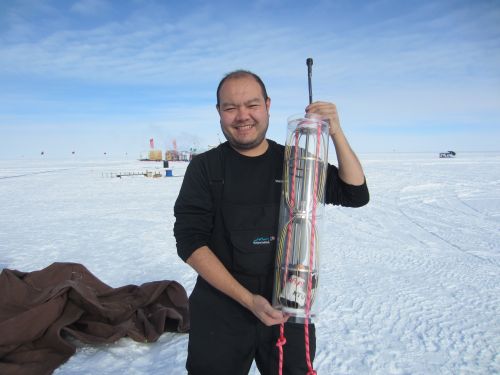
Above the v-pol, there's an LNA (low-noise amplifier). The LNA amplifies the signal from the antenna so it's placed on the string pretty close to the v-pol.
As I understand it, neutrinos can be coming from any direction so the radio waves can be generated in any direction. Which means that the ARA strings need to have multiple antennas, to make sure they can see any of the generated waves. So, the next antenna that goes on the string is the H-pol ("horizontally polarized), which is for detecting waves that are parallel to the earth's surface (or horizontal). And, same as for the v-pol, there are two h-pol antennas. The first one in is the bottom h-pol.
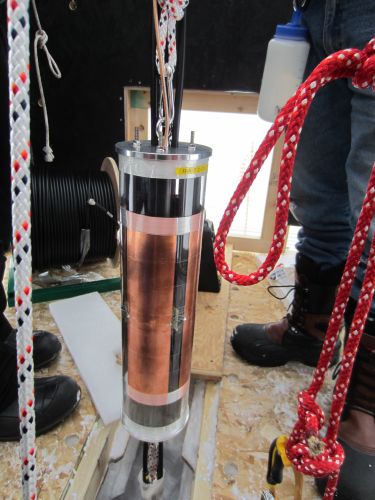
Then, there's another LNA for the h-pol. The whole time the string is being deployed, one of the guys keeps track of the serial numbers for each piece of equipment. So, each string has a sheet of paper that looks like this:

As you can see from the sheet, the antennas alternate. First the bottom v-pol, then the bottom h-pol, then top v-pol, and then top h-pol.
After all of the equipment is on the string, it's lowered the rest of the way into the hole. This requires three people - one person to hold/lower the rope, one person to feed out the power cable, and one person to feed out the fiber optic cable. (All of the signals from the antennas are transmitted via the fiber optic cable.) It's easy to damage the fibers though so the person in charge of that one has to be really careful not to bend the cable too much. There's about 400 feet of cable/rope lowered into the hole after the antennas.
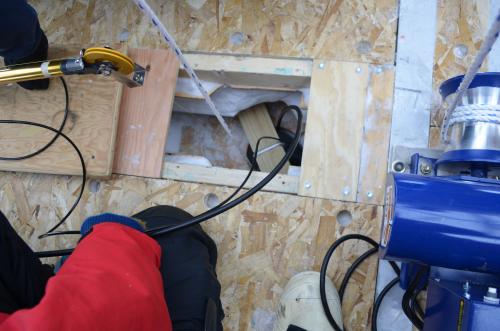
Finally, at the top of the hole, a smaller piece of wood is attached to the rope. This piece of wood sits on the hole cover and keeps the string from falling in. The cables, still on spools, are moved outside the deployment shed and set in the snow. Then the deployment shed is moved over to the next hole, if it's ready. After the shed is moved, a surface antenna has to be constructed and attached to the cables, too.
- The final step is to hook up all the electronics to a DAQ (data acquisition box - takes in all the data from the antennas and transmits it to the ICL). Then, the team tests everything to make sure that the sensors can pick up a test signal and transmit that data to the ICL. (This is what's been happening recently, after all of the strings were deployed). ARA 2 and ARA 3 are both up and running now but there's still a lot more work that needs to be done.
Making a working ARA station is definitely a team effort. There were several people, both at the Pole and back in the North that had to work together to get the stations going. It's really impressive how much these guys were able to do in a relatively short amount of time.
- < prev
- 37 of 37


Comments